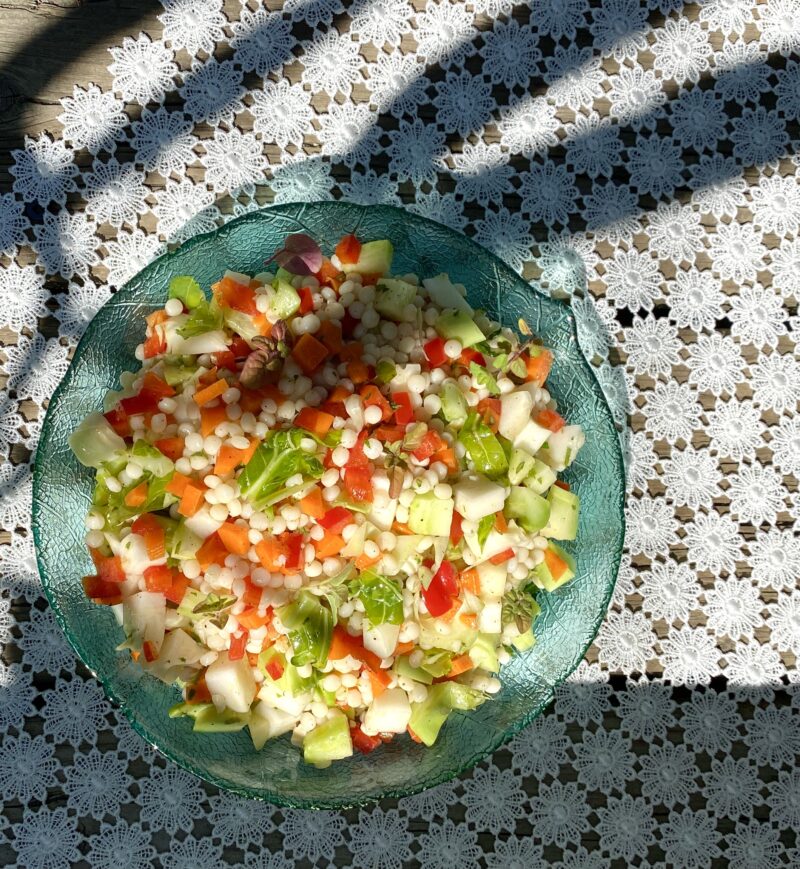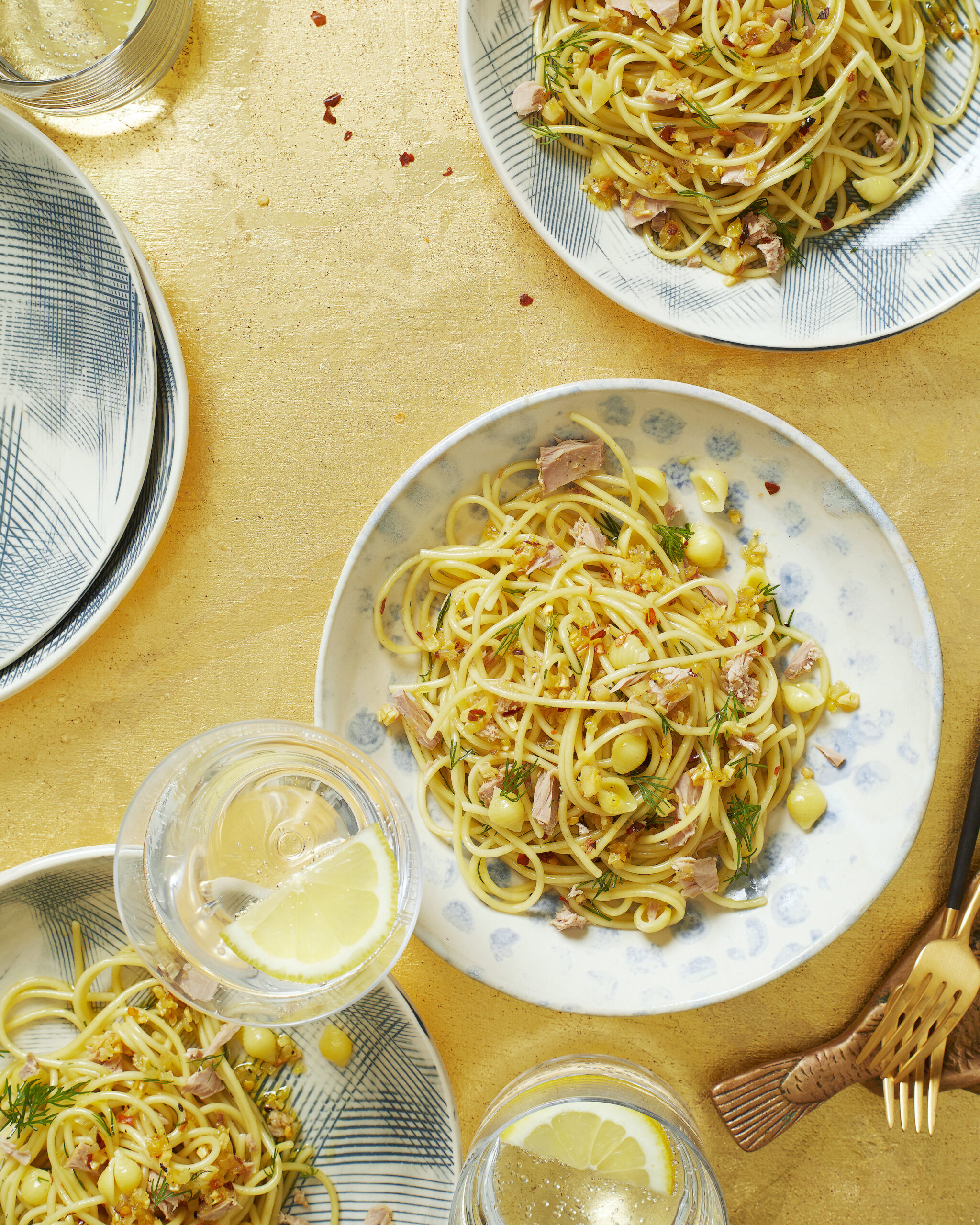My favorite restaurant as a kid was a place called Ponderosa because it had a salad bar. The best thing about a salad bar is all the options you have personalize your salad to your liking—so start thinking of your fridge as your own personal salad bar! A salad is the perfect vehicle for using up a wide array of ingredients you have on hand, and can be served as a side dish or a main, or even as an edible bed to round out other food items, like falafels or fish cakes.
Salad Types
During my culinary training I learned the greatest salad secret: there are five categories of salads. Here they are:
The Green Salad: Fresh, clean, and crisp simple salad greens tossed with a light dressing. These are typically served as a side or used as a base for other foods such as grilled meat.
The Farinaceous Salad: Chopped raw or blanched vegetables tossed or topped with a cooked starch, such as cooked grains, legumes, or pasta. Protein or cheese is a welcome addition here, as seen here in my Root Veggie Stem and Israeli Couscous Salad. These are also known as grain or salad bowls.
The Bound Salad: All the ingredients—cooked starches, proteins, and vegetables—bound together with a thick emulsified or a mayonnaise-based dressing. Typically, the bound salad is perfect for a sandwich filling, or a topping on other salads, like the Green. A Curried Chicken and Grape Salad is another great example.
The Composed Salad: A combination of ingredients layered together on a plate or platter rather than tossed. They can be served warm or cold, or a combination of both, and can use a variety of cooked ingredients layered overtop crisper cool raw elements. This is a great salad to use up leftover cooked proteins or grilled, cooked vegetables.
The Fruit Salad: An all-fruit salad or a salad that uses fruit as an accompanying ingredient. You can add quite a selection of fresh or dried fruit into any salad. I love making a fruit salad with fresh mint once a week and keeping it in the fridge to have as a quick dessert or with yogurt and granola for breakfast. Any excuse for my kids to eat more fruit!
Lettuce Eat!
In reality, there can be a lot of crossover between these categories, which is where salads get really interesting and inventive. Mix and match to your hearts content, depending on what you have on hand. Note: you will see some crossover with the ingredients below, since something like cooked grains can be used as a base for your salad or just as an additional add-on, if you only have a little bit still kicking around. Now, let’s dive into how to build the perfect salad.
First Stop: Build Your Base
Chopped raw vegetables
Coleslaw
Cooked grains, pasta, beans and/or legumes
Greens: lettuce or bitter
Sprouts
Second Stop: Eat Your Vegetables
Chopped vegetables: raw, blanched, steamed, and/or grilled, or frozen and thawed (peas, corn, etc.)
Greens: lettuce or bitter
Raw sprouts or microgreens
Third Stop: Add the Protein Boost
Canned fish, such as tuna
Cooked legumes
Cooked protein (any meat, seafood, tofu etc.)
Cured sliced deli meats, such as ham
Hard-boiled eggs
Fish Cakes
Smoked/cured seafood
The Detour: Fruity Twist
Apple and/or pear slices
Berries
Citrus wedges
Dried fruit and/or berries
Grapes
Papaya, mango, pineapple, and/or peach slices
The Scenic Route: Add More!
Anchovies
Avocado or guacamole
Capers or caper berries
Chopped (candied) nuts and/or seeds
Chopped herbs
Crispy fried onions
Crispy legumes
Croutons or crackers
Dried coconut
Grated, chopped, or crumbled cheese
Green onions
Hummus or other dips
Kimchi
Marinated vegetables
Nori
Olives
Pickled hot peppers
Pickled vegetables
Sundried tomatoes
Salsas
Sprouts
Final Destination: Dress It Up
Combination of oil, vinegar, and herbs
Greek-Style Dressing
Lemon Dill Buttermilk Dressing
Coleslaw Dressing
Creamy Oil Free Vegan Dressing
Follow me on Instagram and Facebook for more zero-waste tips on more ideas on how to build the perfect salad!



